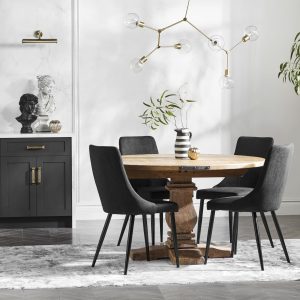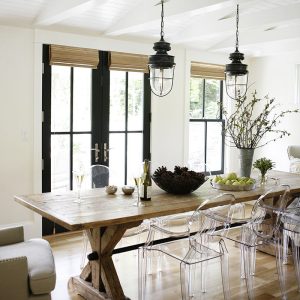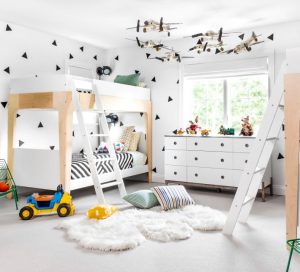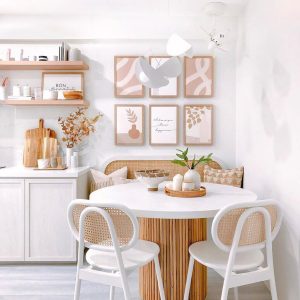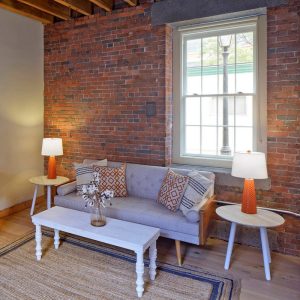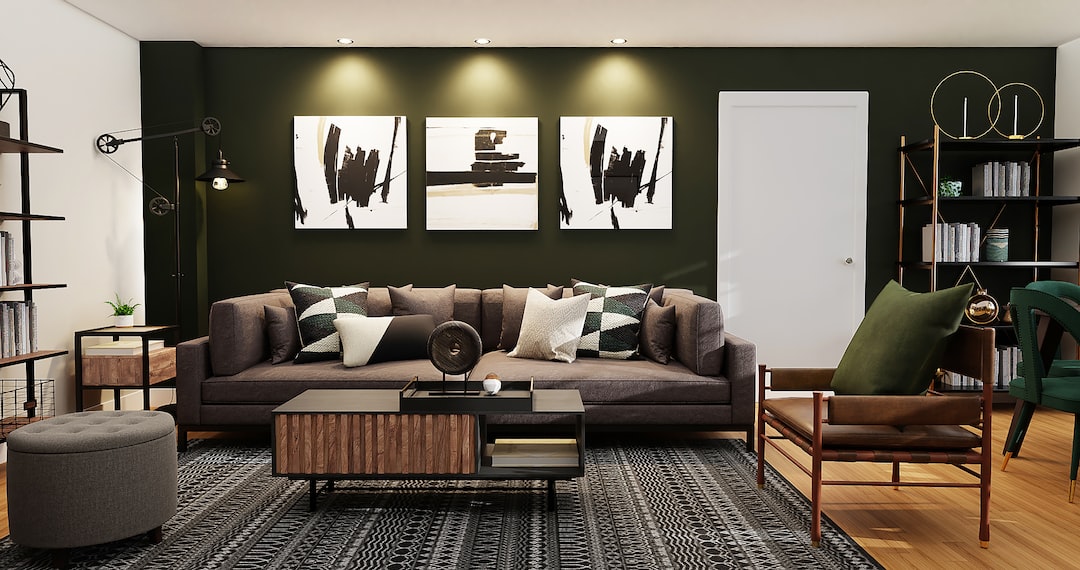
Interior design is the art and science of enhancing the interior of a space to achieve a healthier and more aesthetically pleasing environment for the people using it. It involves the arrangement of furniture, color schemes, lighting, and other elements to create a harmonious and functional space. The practice of interior design has been around for centuries, with evidence of its existence dating back to ancient civilizations such as Egypt and Rome.
Throughout history, interior design has played a significant role in shaping the way we live. In ancient times, it was primarily reserved for the wealthy and powerful, who used it to showcase their status and wealth. However, in modern times, interior design has become more accessible to the general public, with a wide range of styles and options available to suit different tastes and budgets.
The importance of interior design in our daily lives cannot be overstated. A well-designed space can have a profound impact on our mood, productivity, and overall well-being. It can make us feel relaxed and comfortable in our own homes, or inspired and motivated in our workplaces. Interior design is not just about aesthetics; it is about creating spaces that are functional, efficient, and conducive to our needs and desires.
The Importance of Interior Design in Transforming Your Home
Interior design has the power to transform your home into a place that reflects your personality and style. It can turn a dull and uninspiring space into a vibrant and inviting one. A well-designed home not only looks good but also feels good to be in. It can improve your quality of life by creating a space that is comfortable, functional, and visually appealing.
One of the benefits of a well-designed home is improved functionality. A good interior designer will take into account your lifestyle and needs when designing your space. They will consider factors such as traffic flow, storage solutions, and furniture placement to ensure that your home is not only beautiful but also practical. For example, they may suggest open shelving in the kitchen to maximize storage space or a built-in desk in the living room for a home office.
Another benefit of interior design is increased resale value. A well-designed home is more likely to attract potential buyers and command a higher price. When potential buyers walk into a well-designed space, they can envision themselves living there and are more likely to make an offer. Additionally, a well-designed home is less likely to require major renovations or updates, saving you time and money in the long run.
There are countless examples of successful interior design transformations that have completely changed the look and feel of a space. One such example is the transformation of a small, cramped apartment into a spacious and stylish home. By using clever space-saving solutions, such as built-in storage and multi-functional furniture, the interior designer was able to maximize the available space and create a comfortable and functional living environment.
Understanding Your Personal Style and Design Preferences
Understanding your personal style and design preferences is crucial when it comes to interior design. Your home should be a reflection of who you are and what you love. It should be a place where you feel comfortable and at ease. By incorporating your personal style into your home design, you can create a space that truly feels like your own.
To identify your personal style, start by looking for inspiration. Browse through magazines, websites, and social media platforms to find images that resonate with you. Pay attention to the colors, patterns, and textures that catch your eye. Take note of the styles that appeal to you, whether it’s modern, traditional, bohemian, or something else entirely.
Once you have gathered inspiration, look for common themes or elements that appear in the images you have collected. This will help you identify your personal style. For example, if you consistently gravitate towards images with clean lines and minimalistic decor, you may have a modern or contemporary style. On the other hand, if you are drawn to images with bold colors and eclectic patterns, you may have a bohemian or eclectic style.
When incorporating your personal style into your home design, start by choosing a color scheme that reflects your taste. Colors have the power to evoke emotions and set the mood of a space. If you prefer a calm and serene environment, opt for soft and neutral colors. If you want to make a bold statement, choose vibrant and saturated colors. Consider using accent colors to add pops of color and interest to your space.
In addition to color, consider incorporating patterns and textures into your home design. Patterns can add visual interest and create a sense of depth and dimension. They can be used on walls, floors, furniture, and accessories. Textures, on the other hand, can add warmth and coziness to a space. They can be introduced through textiles such as rugs, curtains, and pillows, as well as through materials such as wood, stone, and metal.
Choosing the Right Color Schemes for Your Home
Color plays a crucial role in interior design. It has the power to evoke emotions, create a sense of harmony or contrast, and set the mood of a space. Choosing the right color scheme for your home is essential in creating a cohesive and visually pleasing environment.
When choosing a color scheme for your home, consider the overall mood or atmosphere you want to create. Different colors have different psychological effects. For example, warm colors such as reds, oranges, and yellows are known to evoke feelings of energy and excitement. They can be used in spaces where you want to create a lively and vibrant atmosphere, such as the living room or kitchen.
On the other hand, cool colors such as blues, greens, and purples are known to evoke feelings of calmness and relaxation. They can be used in spaces where you want to create a serene and peaceful atmosphere, such as the bedroom or bathroom. Neutral colors such as whites, grays, and beiges are versatile and can be used as a base for any color scheme. They can create a sense of balance and allow other colors to stand out.
When choosing a color scheme, consider the size and layout of the space. Light colors tend to make a space feel larger and more open, while dark colors can make a space feel smaller and more intimate. If you have a small room, consider using light colors on the walls and floors to create the illusion of space. You can then add pops of color through furniture, accessories, and artwork.
Another factor to consider when choosing a color scheme is the existing elements in the space. Take into account the color of your furniture, flooring, and fixtures. Choose colors that complement or contrast with these elements to create a cohesive look. For example, if you have dark wood furniture, consider using light colors on the walls to create contrast.
There are countless examples of successful color schemes in interior design. One popular color scheme is the use of neutral colors with pops of bold color. This creates a clean and timeless look while adding visual interest and personality to the space. Another popular color scheme is the use of monochromatic colors, where different shades of the same color are used throughout the space. This creates a harmonious and sophisticated look.
Maximizing Space and Functionality with Interior Design
Space planning is an essential aspect of interior design. It involves arranging furniture, fixtures, and other elements in a way that maximizes space and functionality. Good space planning can make a small room feel larger, improve traffic flow, and create a more efficient and organized environment.
When it comes to space planning, it’s important to consider the function of each room or area. Think about how you will be using the space and what activities will take place there. This will help you determine the best layout and placement of furniture and other elements.
Start by measuring the dimensions of the room and creating a floor plan. This will give you a clear idea of the available space and help you visualize different layout options. Consider the placement of windows, doors, and other architectural features, as well as any existing furniture or fixtures that cannot be moved.
When arranging furniture, consider the scale and proportion of each piece. Choose furniture that is appropriate for the size of the room and avoid overcrowding. Leave enough space for people to move around comfortably and for doors to open and close without obstruction.
In addition to furniture placement, consider storage solutions when planning your space. Clutter can make a space feel smaller and more chaotic. Incorporate storage options such as built-in shelves, cabinets, and closets to keep your belongings organized and out of sight.
There are many examples of successful space planning in interior design. One example is the use of multi-functional furniture in small spaces. For example, a sofa with built-in storage can serve as both seating and a place to store blankets or pillows. Another example is the use of open shelving in kitchens to maximize storage space while creating an open and airy feel.
Creating a Cohesive Look with Furniture and Decor
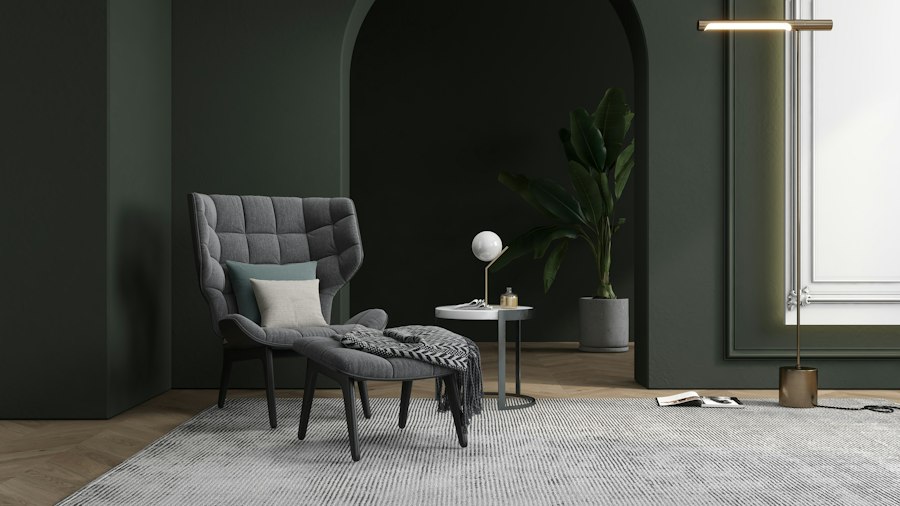
Furniture and decor play a crucial role in interior design. They are not only functional but also contribute to the overall aesthetic of a space. Choosing the right furniture and decor can help create a cohesive look that ties all the elements of a room together.
When selecting furniture, consider the style, scale, and proportion of each piece. Choose furniture that complements the overall style of your home and reflects your personal taste. Avoid mixing too many different styles, as this can create a disjointed look. Instead, choose pieces that have a similar aesthetic or share common design elements.
In addition to style, consider the scale and proportion of each piece. Choose furniture that is appropriate for the size of the room and the other elements in it. For example, a large sectional sofa may overpower a small living room, while a small coffee table may get lost in a large and spacious room.
When it comes to decor, consider the color, pattern, and texture of each piece. Choose decor that complements the color scheme and style of your home. Use decor to add visual interest and personality to a space. For example, you can use throw pillows, rugs, and artwork to add pops of color and pattern to a neutral room.
To create a cohesive look with furniture and decor, consider the placement and arrangement of each piece. Group furniture together to create conversation areas or focal points in a room. Use rugs to define different areas within a space. Hang artwork at eye level and consider the scale of each piece in relation to the wall or furniture it is placed on.
There are many examples of successful furniture and decor arrangements in interior design. One example is the use of symmetry in formal living rooms or dining rooms. By placing matching furniture or decor on either side of a central focal point, such as a fireplace or dining table, you can create a sense of balance and harmony.
Incorporating Sustainable and Eco-Friendly Design Elements
Sustainability is becoming increasingly important in interior design. As awareness of environmental issues grows, more people are looking for ways to incorporate sustainable and eco-friendly design elements into their homes. Sustainable design not only benefits the environment but also creates healthier and more energy-efficient spaces.
When incorporating sustainable design elements into your home, start by considering the materials used in construction and furnishings. Choose materials that are renewable, recycled, or locally sourced. Avoid materials that contain harmful chemicals or contribute to deforestation or pollution.
Consider using energy-efficient appliances and fixtures in your home. This can help reduce your energy consumption and lower your utility bills. Look for appliances with the Energy Star label, which indicates that they meet strict energy efficiency guidelines.
In addition to materials and appliances, consider the use of natural light and ventilation in your home. Maximize the use of windows and skylights to bring in natural light and reduce the need for artificial lighting. Use window treatments such as blinds or curtains to control the amount of light and heat entering your home.
There are many examples of successful sustainable and eco-friendly design in interior design. One example is the use of reclaimed wood in furniture and flooring. Reclaimed wood is sourced from old buildings or furniture and repurposed into new products. It adds character and warmth to a space while reducing the demand for new materials.
Another example is the use of low VOC (volatile organic compounds) paints and finishes. VOCs are chemicals that can be released into the air and contribute to indoor air pollution. Low VOC paints and finishes are made with fewer harmful chemicals, making them safer for both the environment and human health.
Enhancing Lighting and Atmosphere with Interior Design
Lighting is an essential aspect of interior design. It not only serves a functional purpose but also has a significant impact on the atmosphere and mood of a space. Good lighting design can enhance the beauty of a room, create a sense of warmth or drama, and improve visibility and functionality.
When it comes to lighting, consider the different types of lighting available: ambient, task, and accent lighting. Ambient lighting provides overall illumination and sets the mood of a space. It can be achieved through ceiling fixtures, chandeliers, or wall sconces. Task lighting, on the other hand, is focused lighting that is used for specific tasks such as reading or cooking. It can be achieved through desk lamps, under-cabinet lighting, or pendant lights. Accent lighting is used to highlight specific objects or areas in a room, such as artwork or architectural features. It can be achieved through spotlights, track lighting, or picture lights.
Consider the natural light available in your space and how it can be maximized. Natural light not only provides a source of illumination but also has numerous health benefits. It can improve mood, increase productivity, and regulate sleep patterns. Maximize the use of windows and skylights to bring in natural light. Use window treatments such as blinds or curtains to control the amount of light and heat entering your home.
In addition to the type of lighting, consider the color temperature and intensity of the light bulbs used. Color temperature refers to the warmth or coolness of the light emitted by a bulb. Warm white light (around 2700K) creates a cozy and intimate atmosphere, while cool white light (around 5000K) creates a bright and energizing atmosphere. Intensity refers to the brightness of the light emitted by a bulb. Choose bulbs with the appropriate intensity for each area of your home.
There are many examples of successful lighting and atmosphere design in interior design. One example is the use of dimmer switches to control the intensity of the light in a room. This allows you to create different moods and atmospheres depending on the time of day or the activity taking place in the room.
Another example is the use of layered lighting in a space. By combining different types of lighting, such as ambient, task, and accent lighting, you can create a dynamic and visually interesting environment. For example, in a living room, you can use recess ed ceiling lights as ambient lighting to provide overall illumination in the space. Task lighting, such as a floor lamp or table lamp, can be used to provide focused lighting for activities like reading or working. Accent lighting, such as wall sconces or track lighting, can be used to highlight specific features or objects in the room, like artwork or architectural details. By layering these different types of lighting, you can create a versatile and customizable space that can be adapted to different moods and activities.

